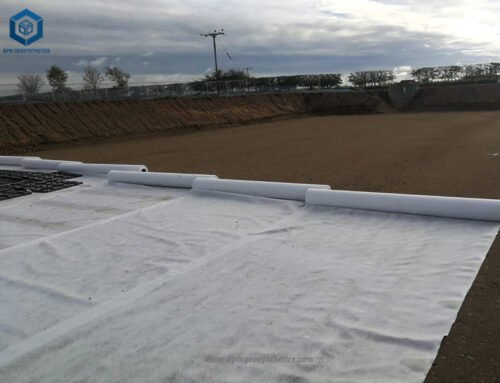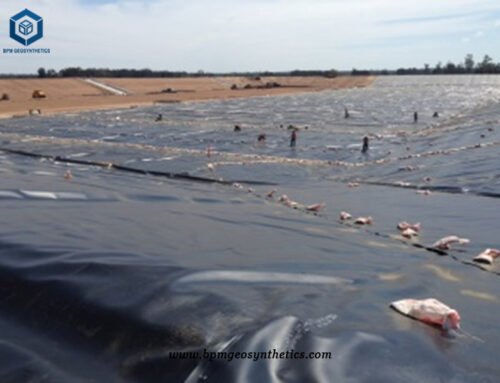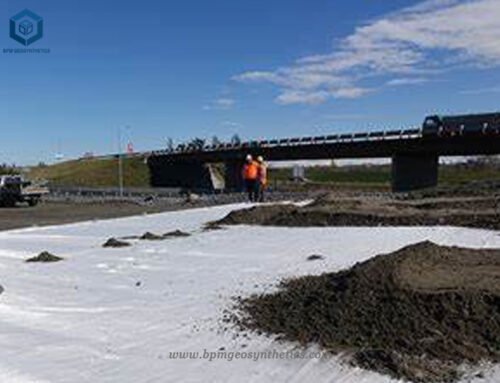Composite drainage nets are the new type of drainage geotechnical materials widely used in railway, tunnel, highway, municipal, dam, slope protection, garbage landfill, wall back garden, and field drainage reinforcement projects. The Philippines, like most Composite drainage net countries in the Asia-Pacific region, is facing a growing problem of solid waste management in its large cities. According to the World Bank, nearly 25 percent of the country’s waste is generated in metro Manila. Such problems can be blamed on the explosive growth in consumption of many goods, including food packaging, caused by high population density, as well as the increased use of various disposable items. Packaging materials also often contain materials that are harmful to the environment. If these wastes are not managed effectively, densely populated urban areas will face a growing waste problem. With a growing population, rising per capita consumption and increasing urbanization, the Philippines is facing two major problems in waste management. Firstly, the rapid growth of waste generation; Second, changes in the composition of waste.
The most serious problem in solid waste management in the Philippines is that the collected waste has nowhere to go, resulting in all the waste ending up in controlled dumps and open dumps. In 2004, there were only two sanitary landfills in the country, in Tala and Cebu provinces. By 2012, due to the increasing enforcement of the law, local governments were gradually shutting down garbage sites and using sanitary landfills as a means of waste management. The state began to build landfills.
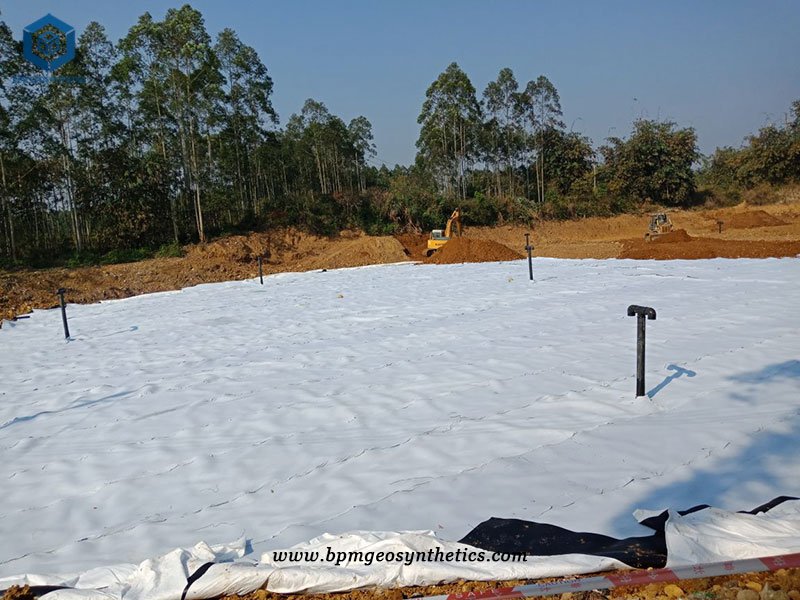
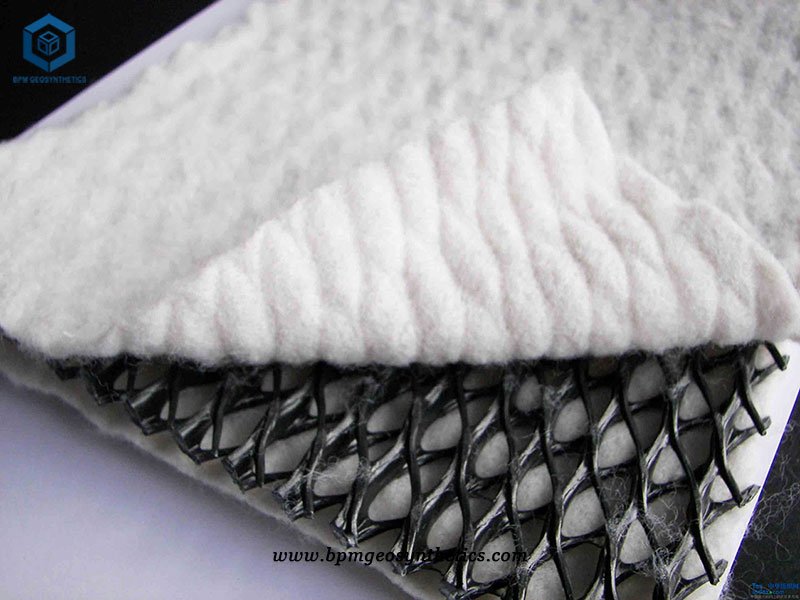
The purpose of the landfill final cover sealing system is to limit the infiltration of precipitation into the landfill and minimize the production of leachate that may invade the water source.
In a sealed field system, the function of the surface water drainage layer is to drain water from the overburden layer and avoid accumulation on the impermeable layer. The water will produce excess pore water stress on the impermeable layer of sealing field, which may lead to the sliding of vegetation-covered soil layer and the destruction of sealing field slope.
Traditionally, sand and gravel are used as the surface water guide layer for sealing site, but it is difficult to stack sand and gravel cushion layer for slope with large slope. However, using three-dimensional composite drainage net can be applied to steeper sealing site slope, and can also increase landfill volume.
The composite drainage nets have high drainage performance, which can eliminate surface seepage in time and ensure the stability of sealed field slope. Sealing field gas exhaust layer The gas exhaust layer of the sealing field system in landfill is not enough or there is no plane gas exhaust layer, and the gas pressure imposed on the impermeable layer is too large, which may lead to the destruction of the sealing field system.
In landfills, composite drainage net can be used to:
- Groundwater drainage layer
- Leakage detection layer
- Leachate collection guide layer
- Sealing field gas collection guide layer
- Guide and discharge of sealing field surface water collection
Composite drainage nets (also known as three-dimensional geotechnical drainage board, tunnel drainage board, drainage board) are composed of three-dimensional plastic mesh double-sided adhesive seepage geotextile, which can replace the traditional sand and gravel layer, mainly used for drainage in landfill, roadbed and tunnel wall.
Composite drainage nets are the new type of drainage geotechnical materials. With high density polyethylene (HDPE) as raw material, processed by extrusion molding process, with three layers of structure. The middle bars are rigid and longitudinally arranged to form a drainage channel. The upper and lower cross bars form a support to prevent geotextile from embedding into the drainage channel, which can maintain high drainage performance even under high loads. Double-sided adhesive permeable geotextile compound use, with “filtration – drainage – ventilation – protection” comprehensive properties, is a better drainage material. The Composite drainage net has the following features.
- Good drainage (equivalent to one meter of gravel drainage).
- High tensile strength.
- Reduce the probability of geotextile embedded in the mesh core, and maintain long-term stable drainage.
- Long term high pressure load (can withstand compression load of about 3000Ka).
- Corrosion resistance, acid and alkali resistance, long service life.
- The construction is convenient, shorten the construction period and reduce the cost
- When the load is 720kPa and the gradient is 2%, the permeability is 2500m/d and the flow rate is 13pm/m.
- After bearing 1200kPa load for 10000 hours, the creep test retains more than 60% of the thickness and 3d drainage net
- Three rib drainage net core carbon black content is not less than 2%, density 0.94g/cm3, tensile strength is not less than 36.5kN/m, melting index 1.0g /10min, thickness 7.6mm.
- Non-woven geotextiles apparent aperture 0.18mm, permeability 0.26 sec-1, permeability 0.2cm/ Sec, puncture strength 580N, trapezoidal tearing strength 356N, holding tensile strength 900 N, holding extension strength 50%, bursting strength 2750kPa.
Joints and lap joints of composite drainage net
- Adjust the direction of the geosynthetic material to make the length direction of the material roll perpendicular to the road.
- Composite geotechnical drainage net must be connected, adjacent geotextile core along the material lap.
- The adjacent geomaterial volume of the geonet core with white or yellow plastic buckle or polymer tape connected, so as to connect the material volume. Attach tape every 3 feet along the length of the reel of material.
- The direction of the lap geotextiles should be consistent with the direction of the packing. If the geotextile is laid between the foundation/base and subbase, a continuous wedge weld, flat weld or suture shall be performed to secure the upper layer of the lap geotextile. For stitching, flat or general stitching is recommended to achieve the minimum required stitch length.
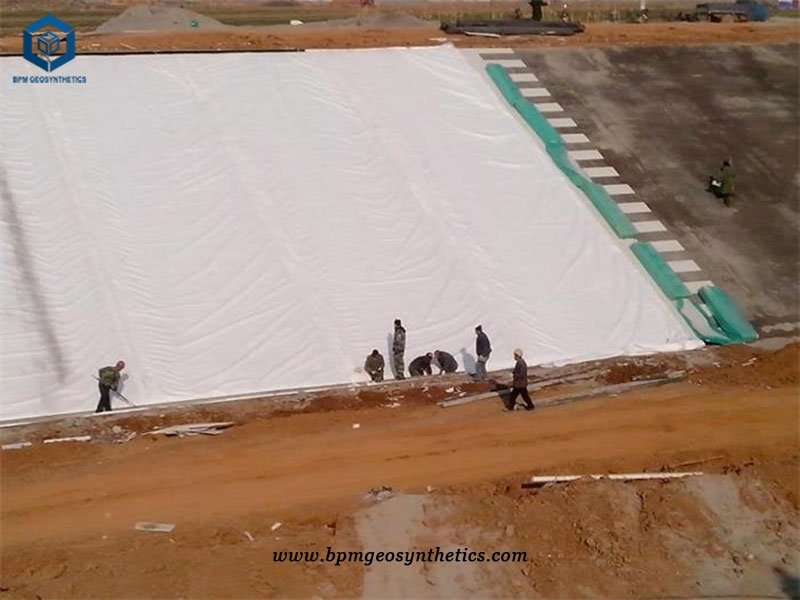
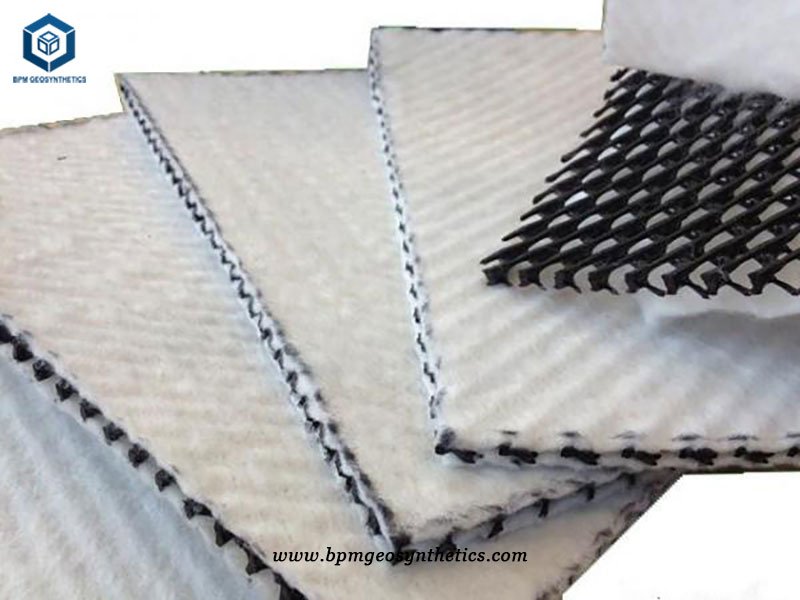
Composite drainage nets with high drainage performance can be used in the gas drainage layer of sealing field system. The gas guide layer of landfill sealing system is composed of high guide and discharge composite drainage net or three-dimensional composite drainage net combined with sand and gravel. In the sealing system of landfill site, the three-dimensional composite drainage net is used as the surface water and gas drainage layer, which can be applied to the steep slope, and its high drainage performance can timely exclude water and gas, so as to ensure the stability of slope.
The Philippines customers through our website to contact our salesman, will send us project drawings and technical indicators, BPM agent according to the data provided by the customer, after the installation of the professional engineer communication, video meeting with customers, detailed introduces the production technology of composite drainage net, technical indicators, the production inspection process, laboratory batch inspection, etc., The customer is very happy to know such a detailed product introduction, and requires mailing samples and on-site testing. BPM salesman will send international express at the first time. After receiving the sample, the customer will test it and find the product specification they need. Request to quote and confirm delivery time. The final customer ordered 5mm NET Composite 200g/ M2 Filament Geotextile 2layers, 10*40HQ containers.
Specifications of Composite Drainage Nets for Landfill Project in Philippines
- Specifications – 5mm Net Composite 200g/m2 Geotextile
- Total Quantity – 68000 Square meters
- Each roll Size – 6m*50m
- Standard – ASTM GM13 standard
About BPM
BPM has been specializing in delivering one stop geosynthetics products and solutions to worldwide customers since its foundation in 2007. BPM had provided many types of effective and state of the art geomembranes, geotextiles, geocells, geosynthetic clay liners (GCLs), drainage boards, geogrids to over 81 countries. Our main customers are from Australia, France, Sweden, UK, Hong Kong, Hungary, New Zealand, Poland, Mexico, Ecuador, Brazil, Pakistan, Bangladesh, Thailand, Vietnam, Malaysia, Indonesia, Singapore, Philippines, Sri Lanka, India, UAE, Saudi Arabia, Qatar, Kenya, Ghana, Ethiopia, Somalia, Nigeria, South Africa, Swaziland, Mongolia, etc.
BPM is not only manufacturing best quality geosynthetic products but also providing professional design and installation service. OEM, ODM, custom development and fabrication are also available. If you have any questions or inquiries, please fill and submit the following form, we will reply as soon as possible.


